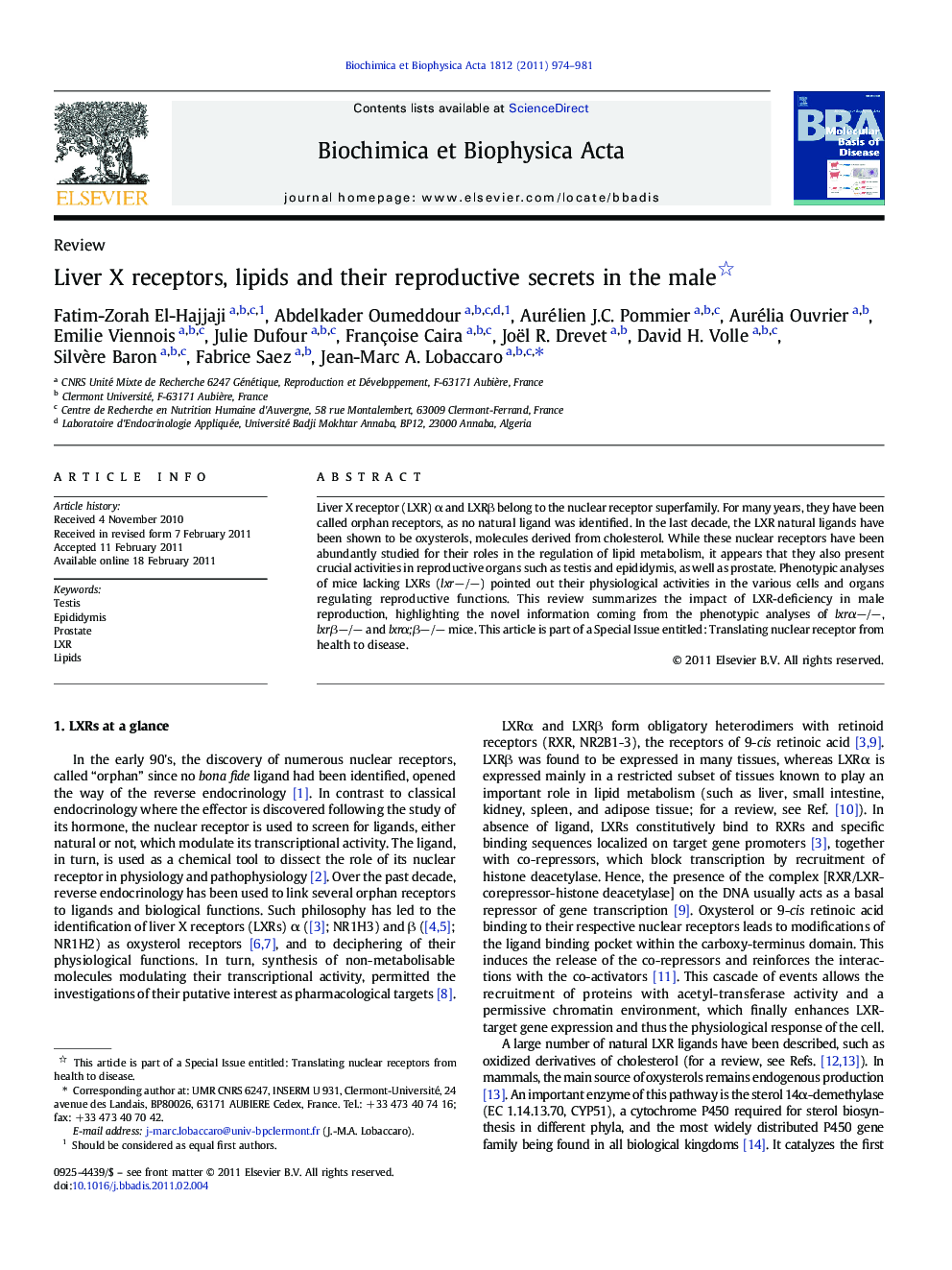| Article ID | Journal | Published Year | Pages | File Type |
|---|---|---|---|---|
| 1905095 | Biochimica et Biophysica Acta (BBA) - Molecular Basis of Disease | 2011 | 8 Pages |
Liver X receptor (LXR) α and LXRβ belong to the nuclear receptor superfamily. For many years, they have been called orphan receptors, as no natural ligand was identified. In the last decade, the LXR natural ligands have been shown to be oxysterols, molecules derived from cholesterol. While these nuclear receptors have been abundantly studied for their roles in the regulation of lipid metabolism, it appears that they also present crucial activities in reproductive organs such as testis and epididymis, as well as prostate. Phenotypic analyses of mice lacking LXRs (lxr−/−) pointed out their physiological activities in the various cells and organs regulating reproductive functions. This review summarizes the impact of LXR-deficiency in male reproduction, highlighting the novel information coming from the phenotypic analyses of lxrα−/−, lxrβ−/− and lxrα;β−/− mice. This article is part of a Special Issue entitled: Translating nuclear receptor from health to disease.
Research Highlights►LXRs are activated by oxysterols presented in the male reproductive tract. ►LXRs are necessary for testicular physiology. ►LXR-deficient mice present abnormal features of the epididymis. ►LXR agonist modifies the apoptosis–proliferation balance in prostate cancer cells. ►LXRs are promising pharmacological targets in human disease.
